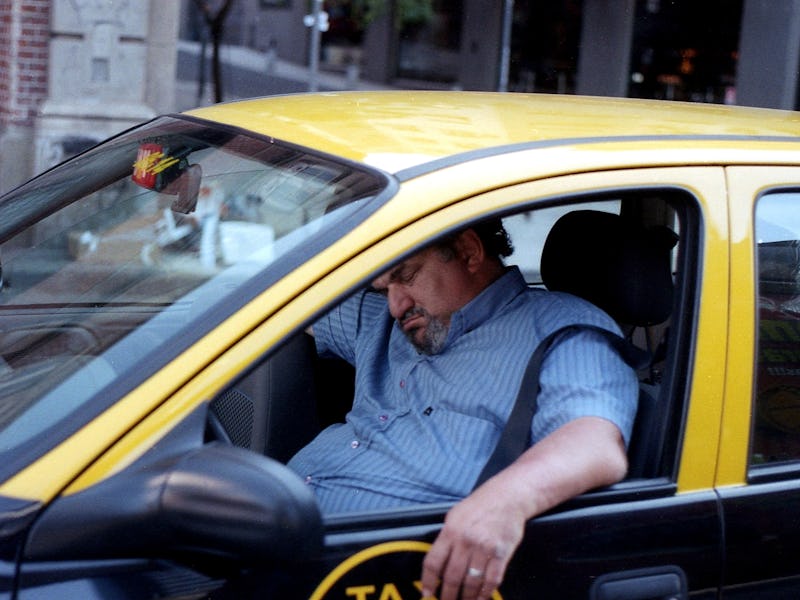What Will Happen When You Fall Asleep At the Wheel of Your Driverless Car?
Can you snooze and win?

Driverless cars, as proposed by Google, contain all the needed ingredients for carcolepsy: In certain models there’s no steering wheel — just a panic button — and the experience of twiddling thumbs as a computer drives you to and fro has been described, widely, as relaxing. That driving can be an exercise in monotony and drivers can be distracted or tired is the reason psychologists coined the phenomenon highway hypnosis. Snoozing in a totally no-steer car, per the utopian driverless ideal, appears inevitable. (And is foreshadowed by this man, a head-nod away from complete slumber while sitting in his erstwhile driver chair, as a self-operating bus scoots around China.)
Does it matter if he rocks a driverside siesta?
Road snoozing, if likely, is also problematic. When University of Michigan polled consumers around the world in 2014 about what they would do in a self-driving car, sleep was a consistent top-three option. It was number one in Japan, number two in the UK and Australia, and third in China and the U.S. But only seven percent of people who chose sleep as an option expressed happiness about their looming naps.
The ambivalence seems to be a product of mass discomfort with mandatory passivity, which is why car designers are busily looking for ways to engage riders in the driving process.
What might work is an automated system that borrows elements from airplane controls, which need to be adjusted but are mostly hands-free. Still, flying isn’t like driving because shutdown doesn’t mean death. A long stretch of straight road could be a safe place to nap in a way that the sky never has been. Still, this won’t work without two components: a trustworthy alarm system baked in, to wake a passenger up in case of emergency or at the end of the preprogrammed safe stretch; more fundamentally, you’d need a biometric system that can tell when you are asleep or awake. This already exists in certain concept cars, such the one Mercedes unveiled at the 2015 Consumer Electronics Show, which using LG’s Advanced Driving Assistance System cameras to gauge driver sleepiness.
Tesla founder Elon Musk believes that falling asleep in a driverless car and waking up at your destination will be plausible, technology-wise, in about half a decade. But he also seems at least partly aware that sleeping in cars is a potential liability nightmare for regulators and insurers. Even something as simple as a panic button becomes useless if you’re not conscious enough to press it. Though you won’t always actively drive your vehicle in the future, don’t be surprised if something using an LG ADAS-type system gently prods you awake.